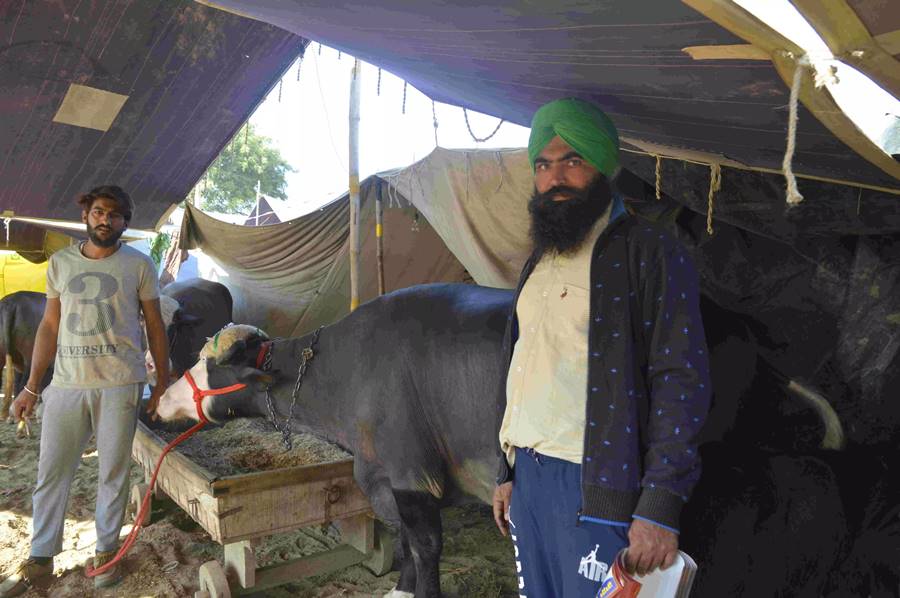All froth and fury: Milk as protest tool in Haryana
Angered by inaction over the farm laws, some dairies in rural Haryana have stopped sending milk to the cities from March 1, following a khap panchayat decision. Some have announced milk will be sold at Rs 100 a litre. However, the Samyukt Kisan Morcha, which is leading the farmers’ protest, has distanced itself from these decisions.


Milk production in the country has increased from 146.3 million metric tonnes in 2014-15 to 187.7 million metric tonnes in 2018-19. (Photo: ILRI, Flickr)
Since March 1, many dairy farmers in rural Haryana have stopped sending milk out to the cities, following a call from khap panchayats (community organisations), in protest against the Centre’s inaction over the farm laws. They will not be sending milk out till March 5, it has been decided. Certain khaps also said the price of milk will be hiked to Rs 100 a litre from March 6, to keep up with the rise in price of fuel.
Farmer Ramphal Singh from Kapro village in Hisar district usually sends out between 40 and 45 litres of milk a day from his dairy. “Like the other farmers in my village, I am following the khap panchayat order, and will not send out milk till March 5. I am distributing the milk in the village itself. We will take a call depending on the panchayat decision.”
The khap panchayat of Hisar district decided to price milk at Rs 100 a litre, to keep up with the rise in cost of petrol and diesel.
For some days now, news about an impending hike in the price of milk, and ban on sending milk to markets has been doing the rounds of social media. The Samyukt Kisan Morcha, which is leading the farmers’ agitation, debunked these messages and has not lent support to the khap decisions. It has since issued a video to this effect. The Bhartiya Kisan Union Ekta-Ugraha has also termed the messages “baseless and untrue”. However, the ground situation is slightly different.

Darshan Pal, a farmer leader and key figure of the Samyukt Kisan Morcha, said in a video that: “A message on social media has asked farmers to withhold supply of milk to cities from March 1 to March 5 and to sell milk at a minimum hundred rupees a litre from March 6, to get the government to accept our demands. This has nothing to do with our association.”
As far as the price of milk is concerned, Pal said: “Farmers must carry on selling milk, and at the same price. Do not be misled,” he said.
The Satrol Khap Panchayat, which handles 100 villages, was among those who asked its members to hike milk rates. It said that though the farmers’ agitation has been going on for more than three months, the government has not worked towards resolving the issue. The khap panchayat, however, clarified that there was no restriction on sharing milk within the village.
Shamsher Singh Arya, state president of Haryana State Goshala Sangh, told Gaon Connection, “We will not send out milk till March 5, and then sell it only at hundred rupees a litre.”
The issue of Rs 100 for a litre of milk has been trending on Twitter since February 27 (Saturday) — there was even a calculation that included base price, green fodder tax, dung tax and labour charge, which pegged the price at Rs 100 a litre.
According to the National Dairy Development Board, the country produces about 187.7 million tonnes (2018-19) of milk, with the highest milk production in Uttar Pradesh. Haryana and Punjab produce 10.7 million tonnes 12.59 million tonnes of milk, respectively.
At present, buffalo milk sells between Rs 45 and Rs 50 a litre, and cow’s milk between Rs 35 and Rs 40 a litre, Mohan Ahluwalia, chairperson of Gair Milawati Samaj-Gwala Gaddi, a society that works against adulterated milk and is based out of Khedi village in Haryana, told Gaon Connection.
“In Haryana, some khap panchayats have decided upon hundred rupees as the price of a litre of milk. Although they have good influence in some districts, this price cannot be implemented throughout Haryana,” he added.
However, the districts where the khap panchayats do have an impact happen to be the major milk producers, so the decision taken by them would affect the entire state, and if not Rs 100, it might not be sold below Rs 80, Ahluwalia said.
According to a Press Information Bureau report, the Indian dairy sector has registered a growth of 6.4 per cent in the last four years, while the global milk production growth rate is only 1.7 per cent. Milk production in the country has increased from 146.3 million metric tonnes in 2014-15 to 187.7 million metric tonnes in 2018-19.
But, this is also loss-making for farmers in the dairy business. About 80 million rural households are engaged in dairy production, and most of them are landless, small and marginal farmers.
“This is the season when milk production falls and that will also affect the price of milk. As such, milk rates have only increased marginally from 2015-16. Although the prevailing rate of milk is very low and the proposed milk rate of hundred rupees will benefit farmers, a large section of consumers will not be able to buy milk at that price,” Ahluwalia said.
He cautioned that the decision needs to be well thought out. “Else, adulterated milk might get sold at Rs 100 while pure milk continues to go for a lower rate,” he warned.

